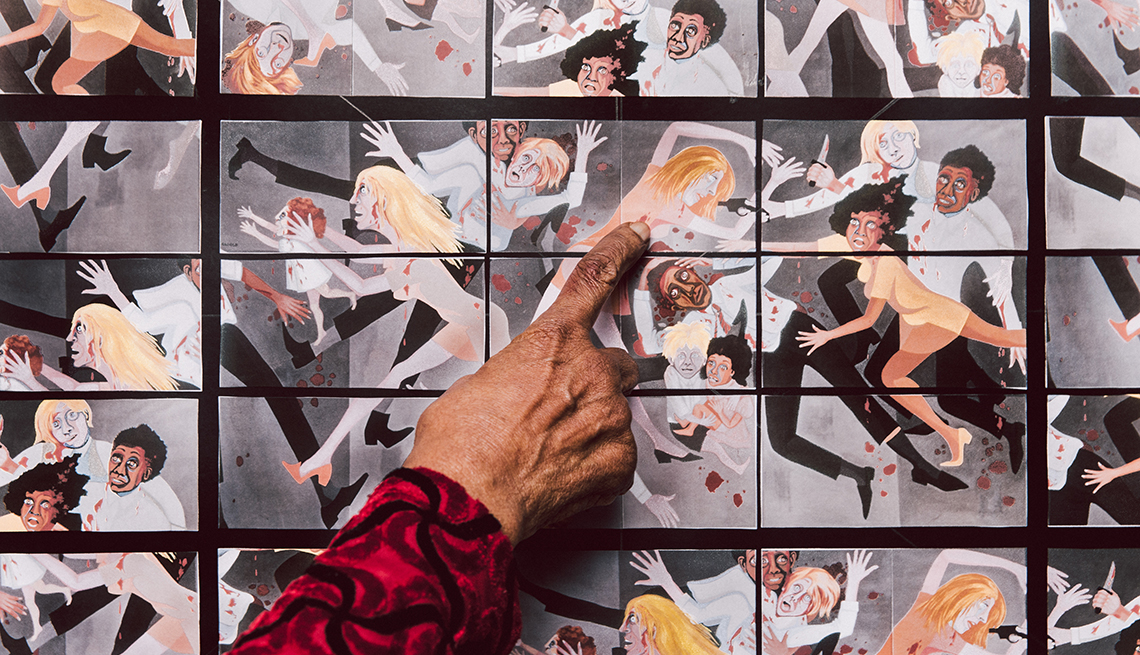I've loved the work of Faith Ringgold for many years. I remember seeing her Tar Beach series in the late 1980s and falling in love with her mixed-media quilts. Here are a few photos from that series:
Faith Ringgold has been a painter, sculptor, author, educator and activist. She has had exhibits in museums and galleries around the world, including the Metropolitan Museum of Art, the Boston Museum of Fine Arts and the Solomon R. Guggenheim Museum. At 86, she has just sold her first large painting called “Die,” to the Museum of Modern Art (MoMA).
We met at her home and spacious studio, in Englewood, N.J., which was brimming with paintings, sculpture, shows she was orchestrating and, of course, designs for her pet project, Quiltuduko.
Tell us about your app, Quiltuduko.
I have made so much art, and now Quiltuduko is my thing. It’s an art-making app that uses color and design — images instead of the number system of Sudoku. It’s a workout that requires memory and focus, and keeps that brain functioning — for young and old alike. Plus, it’s fun, and you have a piece of art to show for it. I have more than 60 diagrams now, and the themes are based on faces, angles, swirls. I can’t stop making them.
Have you ever seen your age as a barrier when you entered the (very young) world of app development?
Absolutely not! I thought of this idea at 83, figured out the various mathematical solutions and found a young developer immediately. I give him the numbers, I work it out, he programs it, and we got it on iTunes. I don’t think of age that way.
And now, at 86, you just sold your first large painting to MoMA.
Yes! And I’m basing my next design for Quiltuduko on this painting. It’s called “Die,” and I made it in reaction to the ’67 racial riots. I’ve been thinking and creating art in panels and squares for a long time but was not really conscious of it. Once I saw it, I realized the influence. It comes from Africa, where I was introduced to Kuba. The colors, shapes and repetitions of those dazzling designs helped shape me and my way of thinking.

ROGER KISBY
Faith explains her panel system for “Die”, the painting she is now programming for Quiltudko.
Tell us about the big milestones of age in your life. How did you feel when you turned 60?
I was not thinking about turning old or young when I turned 60. Age was not anything — at all. I was away at the time, working as an artist in residence at a spectacular château in France. I ignored that birthday and just wanted to focus and complete a series I was working on, the French Collection … and I was trying not to bring my family there, who would definitely want to travel and inevitably distract me. Well, I resisted inviting them or anybody else. And I came home with my work. And I am getting invited to come back again, for three months, and bringing two artists with me to create a show there called “The Ancestors,” in March. Now, how’s that?
How about 80 as a milestone?
Oh, now that was dynamic. I got 80. At first, I thought, “What is all the excitement about being 80? Why is everybody getting so crazy?” The fact is, once I got there, I knew. Eighty is the beginning of age. It sort of slipped up on me — but it is a real marker. And now I’m 86, and that’s even bigger.
Maryjane Fahey is the editor of Disrupt Aging.




